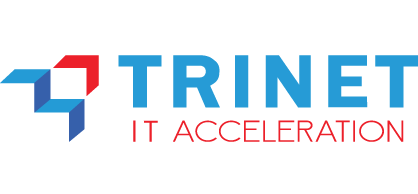Tech Innovation > Security > Third-Party Risk Management & Cyber Risk Ratings

Third-Party Risk Management & Cyber Risk Ratings
Without this solution, organizations face the following challenges:
Advanced Persistent Threats (APT) Undetected
Advanced Persistent Threats (APT) remain undetected until data is stolen, making it difficult to protect sensitive information.
Malware & Ransomware Spread
Malware and ransomware can spread throughout the network without early warning, causing significant damage before detection.
Security Breach Investigation Challenges
Investigating security breaches is difficult without insight into attacker tactics, making timely responses a challenge.
Regulatory Compliance Difficulties
Difficulty in meeting regulatory compliance such as ISO 27001, GDPR, and PDP Law due to lack of early detection mechanisms.

Key Features & Capabilities
Third-Party Risk Management & Cyber Risk Ratings** identifies and mitigates vendor-related security risks.
Show Details
a. Automated Third-Party Risk Assessment & Vendor Scoring
- Evaluating vendor security before & after collaboration.
- Providing risk ratings based on Cyber Risk Ratings for vendors.
b. Continuous Monitoring & Threat Intelligence Integration
- Monitoring vendor security conditions in real-time to detect data breaches or security violations.
- Integrating threat intelligence feeds to check if vendors have faced cyber incidents.
c. Attack Surface Management & Supply Chain Security
- Analyzing vulnerabilities in vendor IT ecosystems & digital supply chains.
- Detecting risks like cloud misconfigurations, exposed credentials, or insecure APIs.
d. Automated Vendor Compliance Check & Regulatory Mapping
- Ensuring vendors comply with security standards like ISO 27001, NIST, GDPR, PCI DSS, and UU PDP.
- Providing automated reports for audit & compliance with cybersecurity frameworks.
e. Risk-Based Access Control for Third-Party Vendors
- Applying Zero Trust Security to vendor access, granting permissions based on necessity.
- Monitoring vendor activity within the system to prevent insider threats or misuse of access.

Business Benefits
Third-Party Risk Management & Cyber Risk Ratings strengthen security by assessing vendor risks effectively.
Show Details
a. Proactively Identify & Mitigate Vendor Risks
- Ensures vendors meet high security standards before granting access to company systems.
- Detects if vendors have experienced data breaches or possess security vulnerabilities.
b. Accelerate Vendor Evaluation & Onboarding
- Reduces the time required for vendor evaluation with automated scoring systems.
- Ensures vendor compliance with security standards before partnership.
c. Ensure Compliance with Regulations & Company Policies
- Complies with data security regulations like ISO 27001, GDPR, PCI DSS, and UU PDP.
- Provides clear audit reports on vendor compliance with global security standards.
d. Prevent Supply Chain Attacks & Insider Threats from Vendors
- Minimizes the risk of attacks through vendors with security weaknesses.
- Monitors & controls vendor access to internal systems with Zero Trust Security.

Use Cases
Third-Party Risk Management & Cyber Risk Ratings offer proactive risk assessment across sectors.
Show Details
a. Banking & Finance
- Assesses Financial Vendor Risks: Evaluates security risks from financial service providers & payment gateways before collaboration.
- Ensures Vendor Compliance: Ensures vendor compliance with financial regulations like PCI DSS & ISO 27001.
b. Healthcare Services
- Analyzes IT Vendor Risks: Analyzes risks of IT vendors managing electronic medical records (EMR) systems.
- Ensures Healthcare Vendor Compliance: Ensures vendor compliance with healthcare regulations like HIPAA & GDPR.
c. E-Commerce & Retail
- Assesses Cloud & Payment Vendor Security: Evaluates security of cloud suppliers, payment processors, and digital service providers.
- Prevents Customer Data Leaks: Avoids customer data breaches caused by vendor negligence.
d. Manufacturing & Supply Chain
- Detects Cyber Risks in Supply Chain: Detects potential cybersecurity risks in manufacturing & logistics supply chains.
- Ensures Supplier Security Standards: Ensures suppliers have appropriate security standards to protect Intellectual Property (IP).
e. Government & Critical Infrastructure
- Manages Vendor Risks Handling Sensitive Data: Manages risks from vendors handling sensitive government data.
- Ensures Contractor Security Compliance: Ensures contractors & partners meet national security standards.

How It Works
Third-Party Risk Management & Cyber Risk Ratings assess, monitor, and mitigate external cyber risks effectively.
Show Details
a. Third-Party Risk Assessment & Cyber Risk Ratings
- Security Data Collection: The system gathers security data from vendors based on technical, operational, and regulatory compliance factors.
- Risk Rating: Vendors are assigned a risk rating based on security standards & past cyber incident records.
b. Continuous Monitoring & Automated Alerts
- Real-Time Alerts: If a vendor experiences a cyber incident or data breach, the system provides real-time alerts.
- Dark Web Detection: Detects if any vendor credentials or digital assets have been exposed on the dark web.
c. Vendor Compliance & Security Remediation
- Security Improvement Recommendations: Vendors with security weaknesses receive remediation recommendations before being granted full access to company systems.
- Automated Audits: Helps vendors meet regulatory requirements with automated audits.
d. Zero Trust Vendor Access Management
- Zero Trust Access Control: Controls vendor access using the Zero Trust principle, granting minimal access based on necessity.
- Vendor Activity Monitoring: Monitors vendor activity within systems to prevent insider threats.
Contact our experts for further information












